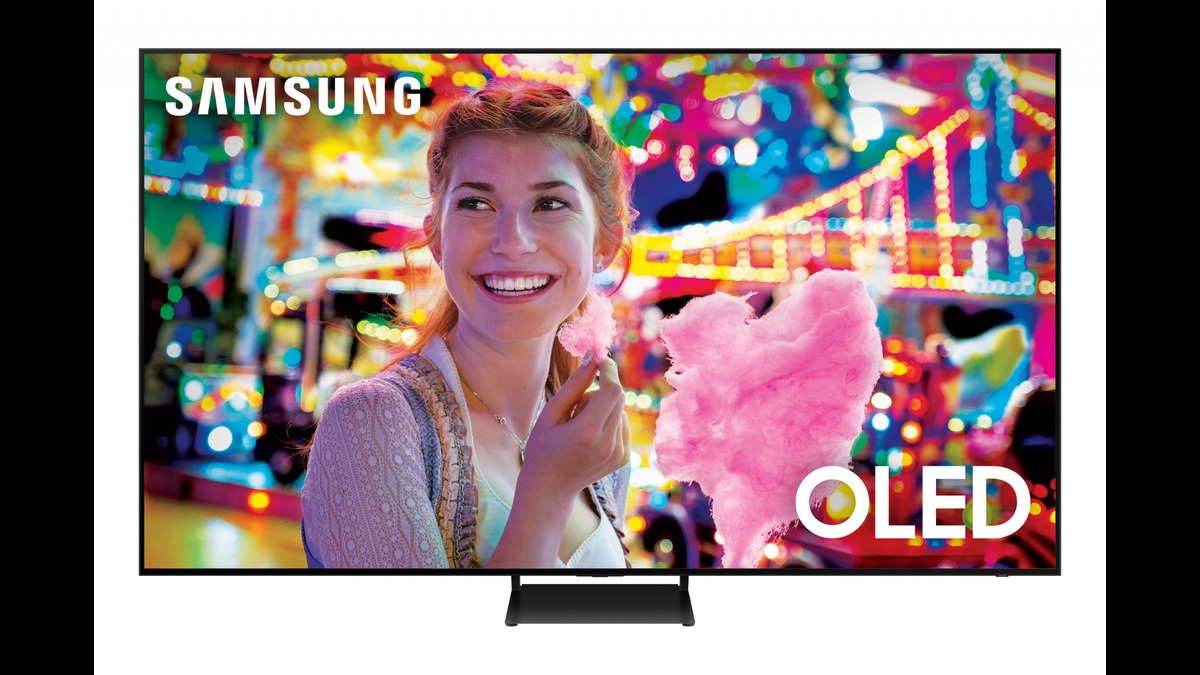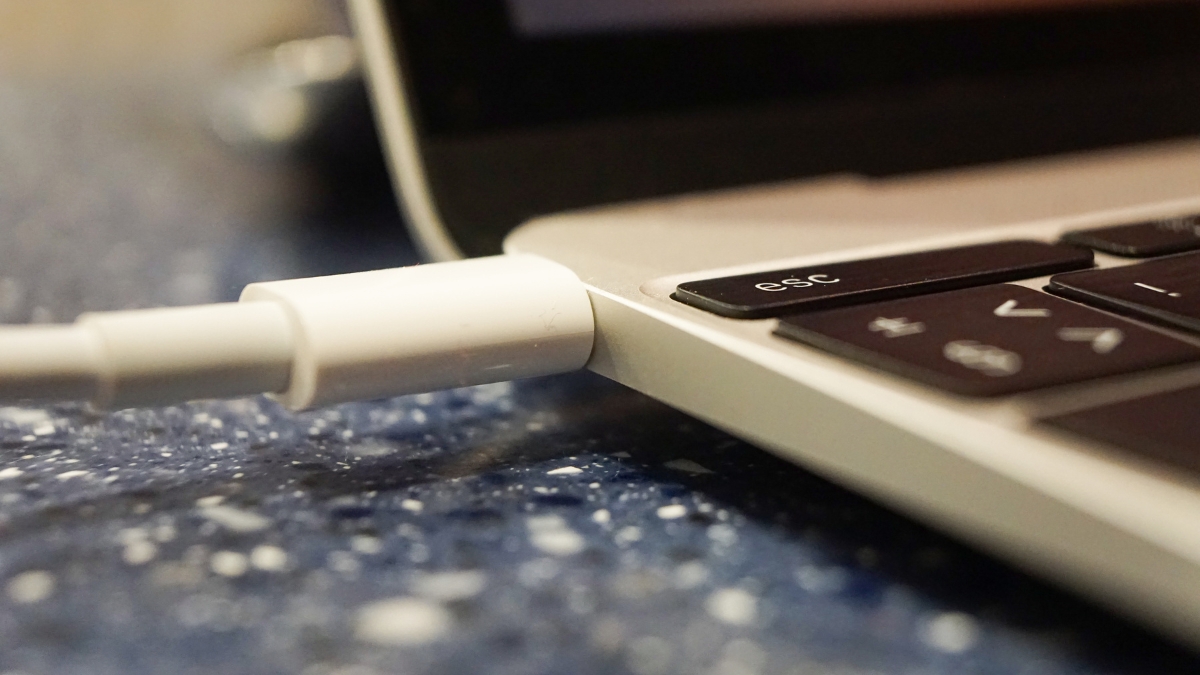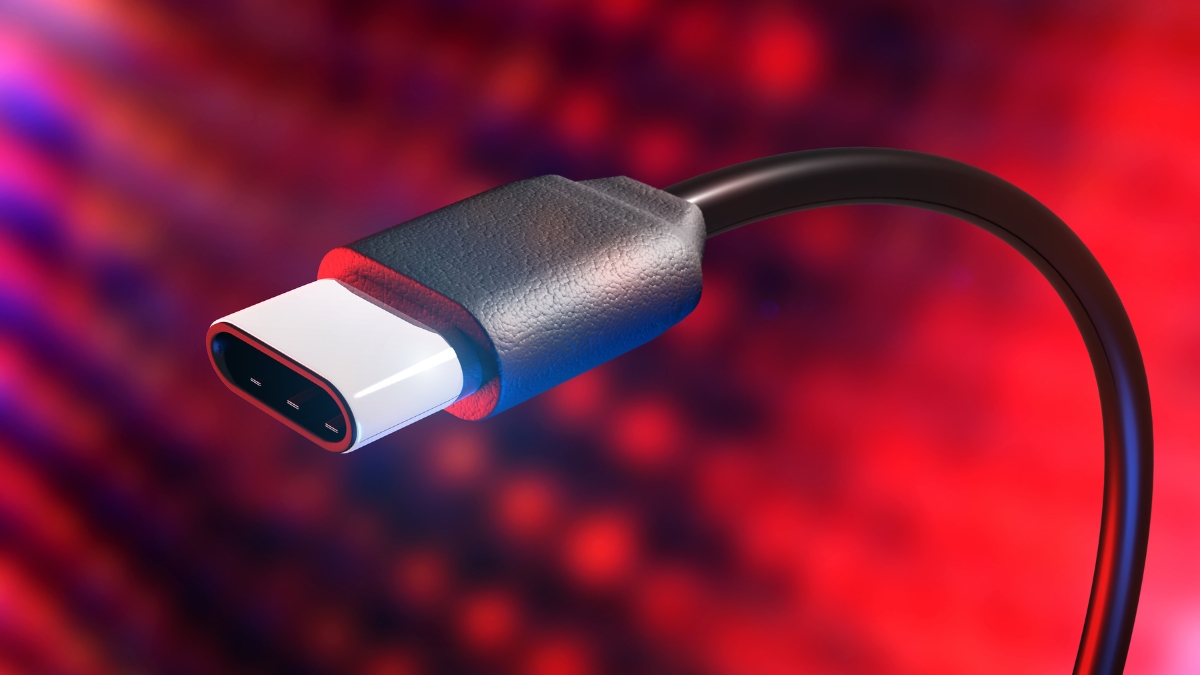
Samsung used to have a clear message about its OLE...
news-extra-space

 Image credit: Shutterstock[/caption]
How do you determine if the USB-C connector on your existing laptop is one that can be used for charging? Although you could always Google it up, inspecting your charger is the simplest option.
A Type-C charger can be recognized by its distinctive characteristics. The connector on USB-C is much smaller and rounder than the one on older USB models. There is no need to turn it the correct way around because it functions regardless of either way you connect it to the correct port. You will succeed if your charger utilizes this connection and plugs into your USB-C port.
There are now USB-C chargers for many various gadgets, so laptops are not the only ones that use them. Newer phones support USB-C charging, and portable chargers (described in more detail below) may offer USB-C alternatives. But, for the time being, laptops are more likely than other gadgets to include USB-C.
[caption id="attachment_64212" align="aligncenter" width="1200"]
Image credit: Shutterstock[/caption]
How do you determine if the USB-C connector on your existing laptop is one that can be used for charging? Although you could always Google it up, inspecting your charger is the simplest option.
A Type-C charger can be recognized by its distinctive characteristics. The connector on USB-C is much smaller and rounder than the one on older USB models. There is no need to turn it the correct way around because it functions regardless of either way you connect it to the correct port. You will succeed if your charger utilizes this connection and plugs into your USB-C port.
There are now USB-C chargers for many various gadgets, so laptops are not the only ones that use them. Newer phones support USB-C charging, and portable chargers (described in more detail below) may offer USB-C alternatives. But, for the time being, laptops are more likely than other gadgets to include USB-C.
[caption id="attachment_64212" align="aligncenter" width="1200"] Image credit: canva[/caption]
Image credit: canva[/caption]
 Image credit: canva[/caption]
Some laptops have non-charging USB-C connections. Although many laptops can be charged either way, only the proprietary charger tends to power up a laptop more rapidly. This is most frequently found on laptops that come with their own unique charger. This is demonstrated by the Samsung Notebook 9 and the 2019 HP Envy 13. Check the manufacturer's website or search for a review of the system here at Digital Trends if you're unsure exactly how to charge your laptop.
While laptops that only use USB-C may not be able to be charged by any charger. In their tests, PCWorld discovered that HP's Spectre x2 will only charge using its proprietary USB-C charger. According to HP, this was done on purpose because an ineffective charger might harm the gadget or cause it to malfunction. Other devices, like the Apple MacBook Pro, don't have as many constraints; this problem may soon be resolved by a new USB-C authentication mechanism.
There is always a little risk when putting a laptop into an unidentified power source, even though we haven't personally heard of any damage from using a USB-C charger other than the one that came with your notebook. Another issue is faulty cables. Microsoft admits this by stating that a Surface can be charged using a USB-C connector, but it is strongly advised to use the Surface charger that was included with the laptop instead because a USB-C charger would be extremely slow due to the way electricity is metering in the device. In conclusion, it's a good idea to get cables and chargers from reliable manufacturers, and you should give using a cable you found lying on the floor in a conference room some thought. For your personal security, you can purchase extra USB-C cables.
[caption id="attachment_64214" align="aligncenter" width="1200"]
Image credit: canva[/caption]
Some laptops have non-charging USB-C connections. Although many laptops can be charged either way, only the proprietary charger tends to power up a laptop more rapidly. This is most frequently found on laptops that come with their own unique charger. This is demonstrated by the Samsung Notebook 9 and the 2019 HP Envy 13. Check the manufacturer's website or search for a review of the system here at Digital Trends if you're unsure exactly how to charge your laptop.
While laptops that only use USB-C may not be able to be charged by any charger. In their tests, PCWorld discovered that HP's Spectre x2 will only charge using its proprietary USB-C charger. According to HP, this was done on purpose because an ineffective charger might harm the gadget or cause it to malfunction. Other devices, like the Apple MacBook Pro, don't have as many constraints; this problem may soon be resolved by a new USB-C authentication mechanism.
There is always a little risk when putting a laptop into an unidentified power source, even though we haven't personally heard of any damage from using a USB-C charger other than the one that came with your notebook. Another issue is faulty cables. Microsoft admits this by stating that a Surface can be charged using a USB-C connector, but it is strongly advised to use the Surface charger that was included with the laptop instead because a USB-C charger would be extremely slow due to the way electricity is metering in the device. In conclusion, it's a good idea to get cables and chargers from reliable manufacturers, and you should give using a cable you found lying on the floor in a conference room some thought. For your personal security, you can purchase extra USB-C cables.
[caption id="attachment_64214" align="aligncenter" width="1200"] Image credit: canva[/caption]
Image credit: canva[/caption]
 Image credit: digitaltrends[/caption]
Portable power sources Perhaps you have a portable charger with a USB connector from a bygone era, but your phone only has a USB-C port (which is not compatible with older USB ports). A laptop with both types of connections can be used to connect the charger to and power your phone indirectly. Do not attempt to directly charge your phone using your laptop's Type C charger. Most currently available devices cannot be charged using multi-device chargers because the voltage needs are too dissimilar.
Image credit: digitaltrends[/caption]
Portable power sources Perhaps you have a portable charger with a USB connector from a bygone era, but your phone only has a USB-C port (which is not compatible with older USB ports). A laptop with both types of connections can be used to connect the charger to and power your phone indirectly. Do not attempt to directly charge your phone using your laptop's Type C charger. Most currently available devices cannot be charged using multi-device chargers because the voltage needs are too dissimilar.
 Image credit: hp[/caption]
both Thunderbolt and USB-C
Thunderbolt is a USB-C variation that is significantly more powerful. A little lightning bolt emblem at the port or on the cable is commonly used to identify Thunderbolt 3 and Thunderbolt 4 technology. Thunderbolt enhances USB-capabilities C's in a variety of ways by utilizing extra technology.
At 40Gbps, Thunderbolt 3/4 are twice as quick as the most recent USB standards. Additionally, Thunderbolt 3 can "chain" up to six devices together, support multiple 4K screens at 60 frames per second (fps), and provide other valuable features for educators, gamers, and other users. Among other useful improvements, Thunderbolt 4 increases the number of compatible external displays, the length of the cable across which Thunderbolt can retain its speeds, and employs DMA (Direct Memory Access) security protection. Thunderbolt has a larger power limit than USB4 when it comes to charging, providing at least 15W and as much as 100W.
Therefore, why aren't all USB-C ports also Thunderbolt ports? It's true that not always. Not all gadgets use Thunderbolt technology, and not everyone needs it. Manufacturers may wish to avoid increasing device pricing by using more expensive hardware. However, it's unquestionably a standard worth looking for if you want the best USB-C performance.
[caption id="attachment_64215" align="aligncenter" width="1200"]
Image credit: hp[/caption]
both Thunderbolt and USB-C
Thunderbolt is a USB-C variation that is significantly more powerful. A little lightning bolt emblem at the port or on the cable is commonly used to identify Thunderbolt 3 and Thunderbolt 4 technology. Thunderbolt enhances USB-capabilities C's in a variety of ways by utilizing extra technology.
At 40Gbps, Thunderbolt 3/4 are twice as quick as the most recent USB standards. Additionally, Thunderbolt 3 can "chain" up to six devices together, support multiple 4K screens at 60 frames per second (fps), and provide other valuable features for educators, gamers, and other users. Among other useful improvements, Thunderbolt 4 increases the number of compatible external displays, the length of the cable across which Thunderbolt can retain its speeds, and employs DMA (Direct Memory Access) security protection. Thunderbolt has a larger power limit than USB4 when it comes to charging, providing at least 15W and as much as 100W.
Therefore, why aren't all USB-C ports also Thunderbolt ports? It's true that not always. Not all gadgets use Thunderbolt technology, and not everyone needs it. Manufacturers may wish to avoid increasing device pricing by using more expensive hardware. However, it's unquestionably a standard worth looking for if you want the best USB-C performance.
[caption id="attachment_64215" align="aligncenter" width="1200"] Image credit: digitaltrends[/caption]
Apple consumers should be aware that they are not exempt from the USB-C transition that is taking place. Apple currently employs proprietary Lightning cables for iOS charging, which isolates all Apple mobile charging products. The business already uses USB-C charging for MacBooks, and current iPad Pro models do the same. Currently, only iPhones and iPads are dependent on Lightning cables.
Apple will need to rethink its Lightning cable system in order to comply with the EU's most recent mandate that phones use universal USB-C charging by the end of 2024. Apple won't abandon the European market, so it's conceivable that the iPhone 15 will completely abandon Lightning cables in favor of a USB-C connection. It is unknown how that will impact Apple's charging capabilities.
In addition, a recent rumor claims that Apple will abandon the Lightning port starting with its iPhone line-up in 2025 for all of its devices. Another source emphasizes how the business is allegedly planning to completely eliminate the connector from the AirPods charging case, mouse, etc.
Image credit: digitaltrends[/caption]
Apple consumers should be aware that they are not exempt from the USB-C transition that is taking place. Apple currently employs proprietary Lightning cables for iOS charging, which isolates all Apple mobile charging products. The business already uses USB-C charging for MacBooks, and current iPad Pro models do the same. Currently, only iPhones and iPads are dependent on Lightning cables.
Apple will need to rethink its Lightning cable system in order to comply with the EU's most recent mandate that phones use universal USB-C charging by the end of 2024. Apple won't abandon the European market, so it's conceivable that the iPhone 15 will completely abandon Lightning cables in favor of a USB-C connection. It is unknown how that will impact Apple's charging capabilities.
In addition, a recent rumor claims that Apple will abandon the Lightning port starting with its iPhone line-up in 2025 for all of its devices. Another source emphasizes how the business is allegedly planning to completely eliminate the connector from the AirPods charging case, mouse, etc.
Leave a Reply






